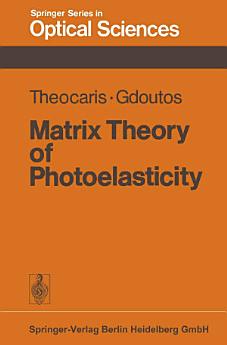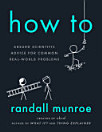Matrix Theory of Photoelasticity
qer 2013 · Springer Series in Optical Sciences Libri 11 · Springer
Libër elektronik
354
Faqe
reportVlerësimet dhe komentet nuk janë të verifikuara Mëso më shumë
Rreth këtij libri elektronik
Photoelasticity as an experimental method for analyzing stress fields in mechanics was developed in the early thirties by the pioneering works of Mesnager in France and Coker and Filon in England. Almost concurrently, Föppl, Mesmer, and Oppel in Germany contributed significantly to what turned out to be an amazing development. Indeed, in the fifties and sixties a tremendous number of scientific papers and monographs appeared, all over the world, dealing with various aspects of the method and its applications in experimental stress analysis. All of these contributions were based on the so-called Neumann-Maxwell stress-opticallaw; they were developed by means of the classical methods of vector analysis and analytic geometry, using the conventionallight-vector concept. This way of treating problems of mechanics by photoelasticity indicated many shortcomings and drawbacks of this classical method, especially when three-dimensional problems of elasticity had to be treated and when complicated load and geometry situations existed. Meanwhile, the idea of using the Poincare sphere for representing any polarization profile in photoelastic applications was introduced by Robert in France and Aben in the USSR, in order to deal with problems of polarization oflight passing through aseries of optical elements (retarders andjor rotators). Although the Poincare-sphere presentation of any polarization profile con stitutes a powerful and elegant method, it exhibits the difficulty of requiring manipulations in three-dimensional space, on the surface of the unit sphere. However, other graphical methods have been developed to bypass this difficulty.
Vlerëso këtë libër elektronik
Na trego se çfarë mendon.
Informacione për leximin
Telefona inteligjentë dhe tabletë
Instalo aplikacionin "Librat e Google Play" për Android dhe iPad/iPhone. Ai sinkronizohet automatikisht me llogarinë tënde dhe të lejon të lexosh online dhe offline kudo që të ndodhesh.
Laptopë dhe kompjuterë
Mund të dëgjosh librat me audio të blerë në Google Play duke përdorur shfletuesin e uebit të kompjuterit.
Lexuesit elektronikë dhe pajisjet e tjera
Për të lexuar në pajisjet me bojë elektronike si p.sh. lexuesit e librave elektronikë Kobo, do të të duhet të shkarkosh një skedar dhe ta transferosh atë te pajisja jote. Ndiq udhëzimet e detajuara në Qendrën e ndihmës për të transferuar skedarët te lexuesit e mbështetur të librave elektronikë.










